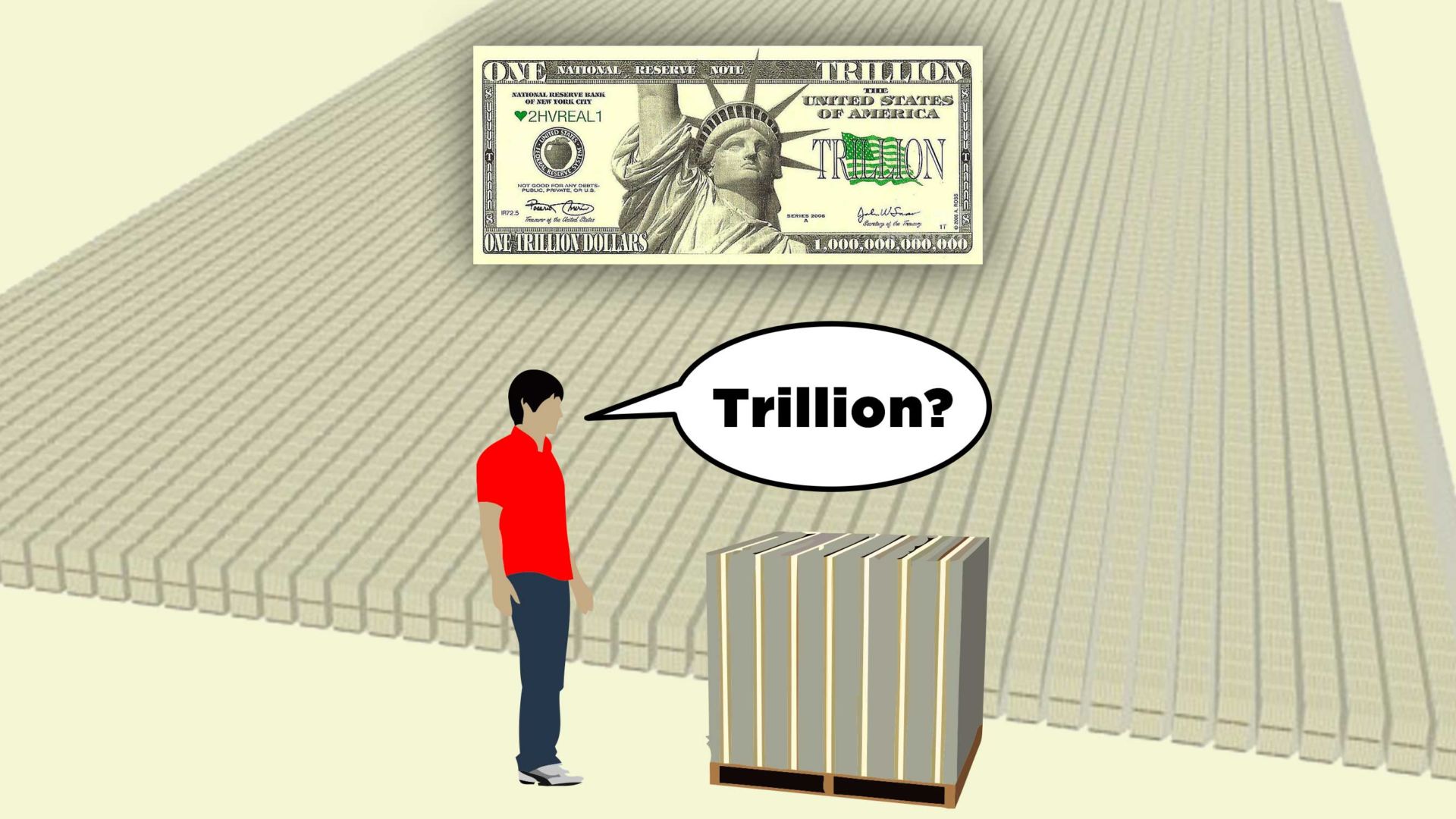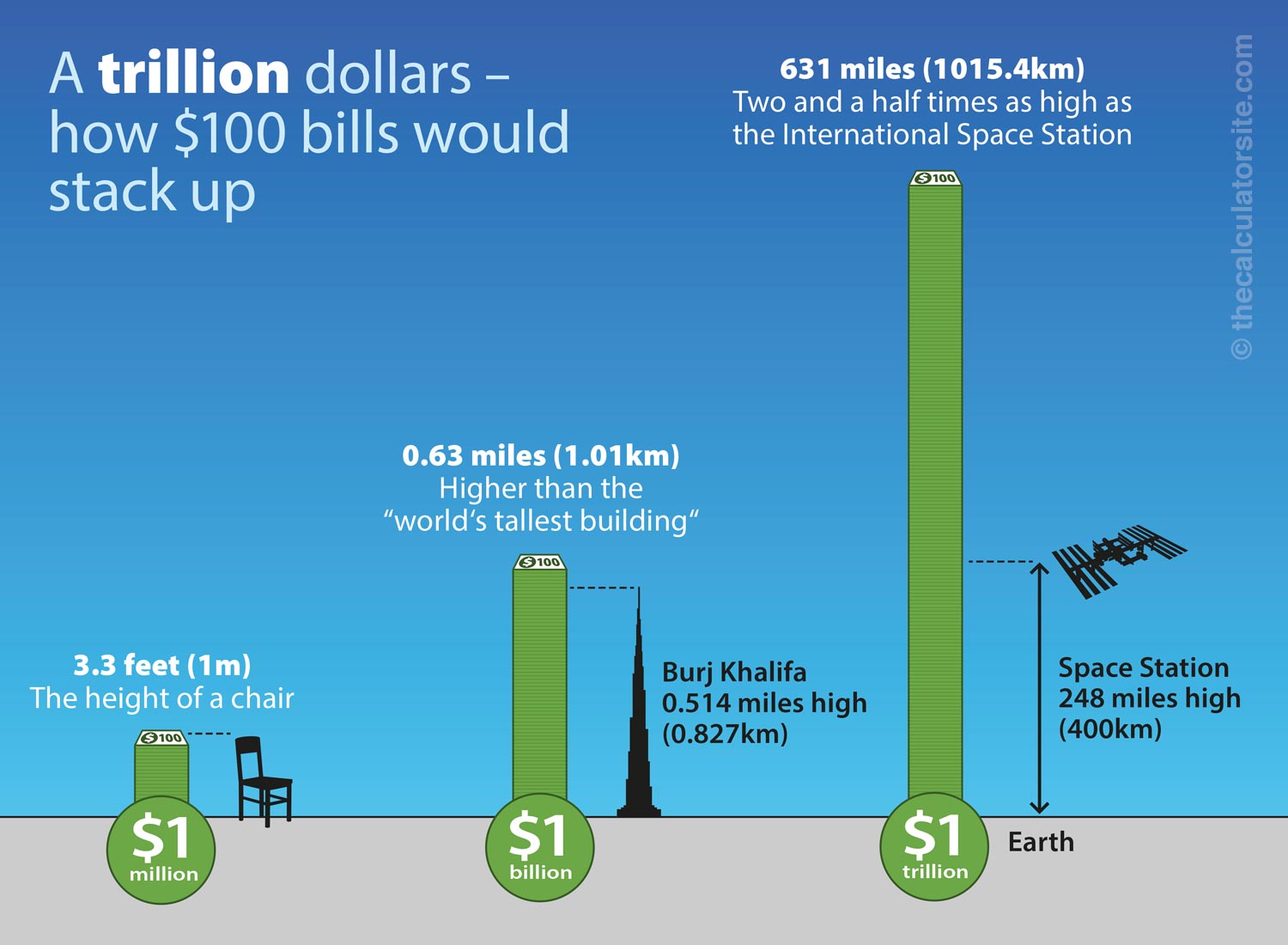What Next After Trillion? Exploring The Mega Milestones Beyond
So here we are, talking about numbers that boggle the mind. What next after trillion? It’s not just a math problem; it’s a question that touches on economics, technology, and even our understanding of the universe. Imagine this: you’ve just hit the trillion mark, whether it’s in dollars, bytes, or even grains of sand. What’s the next level? Let’s dive into the mind-blowing territory where numbers become almost poetic in their enormity. Ready to explore? Let’s go!
Numbers have a way of sneaking up on us, don’t they? What seemed unimaginable a few decades ago—like a trillion-dollar economy—is now part of our daily conversations. But what happens when we outgrow trillion? Is there a cap on how big numbers can get? Spoiler alert: there isn’t. The universe of numbers is infinite, and so is our curiosity. Stick around as we unravel the mysteries of the numbers that come after trillion.
Before we jump into the deep end, let’s establish one thing: this isn’t just about math. This is about understanding the scale of things, from financial systems to data storage to the stars in the sky. So, whether you’re a finance geek, a tech enthusiast, or just someone who loves asking “what’s next?”, this article is for you. Let’s get started!
- Discover The Charm Of Hereford High Md A Thriving Community In Maryland
- Understanding The Dynamic Climate Of Wentzville Missouri
Why Trillion Isn’t the End of the Road
When we talk about trillion, it’s easy to think we’ve reached the pinnacle. After all, it’s a number so massive it’s hard to wrap our heads around. But guess what? Trillion is just the beginning of a whole new world of numbers. Think of it as the base camp before scaling the Everest of digits. So why isn’t trillion the end? Let’s break it down.
Understanding the Scale of Trillion
First things first, let’s put trillion into perspective. A trillion is a million million. That’s 1,000,000,000,000. Yeah, it’s that big. But when you start stacking trillions, they add up faster than you think. For example, the global GDP is measured in trillions, but some countries are now flirting with the idea of quadrillion-dollar economies. And let’s not forget data storage—petabytes, exabytes, and beyond. Trillion is just the starting line.
What Comes After Trillion? The Mega Milestones
Alright, so if trillion isn’t the end, what’s next? Quadrillion, quintillion, sextillion—you get the idea. These numbers aren’t just random; they follow a pattern that mathematicians and scientists have been using for centuries. Each step up the ladder is a thousand times bigger than the last. It’s like climbing a staircase where each step gets exponentially higher. Crazy, right?
- Connecting With The Consulate Of Algeria In New York A Comprehensive Guide
- Exploring The Influence And Legacy Of The Tulsa Football Coach
How Big Is Quadrillion, Really?
Let’s talk about quadrillion for a sec. A quadrillion is a thousand trillion. That’s 1,000,000,000,000,000. To put that into context, if you stacked a quadrillion dollar bills, the pile would stretch to the moon and back… several times. Quadrillion is the kind of number that makes you question the meaning of “big.” But here’s the kicker: it’s not just theoretical. We’re seeing quadrillion-level numbers in real-world applications like data storage, financial markets, and even climate science.
Quadrillion in Everyday Life
Okay, so you might be thinking, “Sure, quadrillion sounds cool, but does it affect me?” The answer is yes, more than you think. For example:
- Data centers around the world are handling quadrillions of bytes of information every day.
- Global financial markets are now measuring assets in the quadrillions.
- Scientists estimate that there are quadrillions of stars in the observable universe.
Quadrillion isn’t just a number; it’s a reflection of how far we’ve come in terms of technology and innovation.
The Quintillion Factor: A Step Further
If quadrillion sounds big, wait till you hear about quintillion. A quintillion is a thousand quadrillion, or 1,000,000,000,000,000,000. That’s 18 zeros, folks. Quintillion is the kind of number that makes you question the fabric of reality. But again, it’s not just theoretical. Quintillion-level numbers are popping up in fields like quantum computing, astrophysics, and even biology.
Applications of Quintillion
Here are a few examples of where quintillion comes into play:
- Quantum computers are capable of processing quintillions of calculations per second.
- Astronomers estimate that there are quintillions of galaxies in the universe.
- In biology, scientists are discovering that the human body contains quintillions of microscopic organisms.
Quintillion is the number that bridges the gap between the infinitely small and the infinitely large. It’s a game-changer in more ways than one.
Sextillion and Beyond: The Universe’s Playground
Once you’ve mastered quintillion, it’s time to step up to the big leagues: sextillion. A sextillion is a thousand quintillion, or 1,000,000,000,000,000,000,000. That’s 21 zeros. Sextillion is the kind of number that makes you feel small in the grand scheme of things. But here’s the thing: it’s not just about numbers. It’s about understanding the universe and our place in it.
What Sextillion Means for Science
Sextillion is the number that scientists use when talking about the stars, planets, and galaxies. For example:
- There are sextillions of stars in the observable universe.
- Some estimates suggest that there are sextillions of planets out there waiting to be discovered.
- In particle physics, sextillion-level numbers are used to describe the interactions between subatomic particles.
Sextillion is the number that helps us make sense of the cosmos. It’s the key to unlocking the mysteries of the universe.
Data Storage: The Quadrillion-Quintillion-Sextillion Race
Let’s talk about data for a moment. In today’s digital age, data is everything. And guess what? We’re generating data at a rate that’s hard to comprehend. Data storage is now measured in quadrillions, quintillions, and even sextillions of bytes. This isn’t just about keeping your photos safe; it’s about building the infrastructure for the future.
The Future of Data Storage
Here’s what the future holds:
- Data centers will need to handle sextillions of bytes of information by the end of the decade.
- New technologies like quantum storage and DNA data storage are being developed to meet the demand.
- The race to sextillion-level storage is on, and it’s driving innovation in ways we never imagined.
Data storage is the backbone of the digital economy, and sextillion is the number that’s shaping its future.
Financial Systems: Quadrillion-Dollar Economies
When it comes to finance, numbers get even bigger. Some of the world’s largest economies are now flirting with the idea of quadrillion-dollar GDPs. And as global trade expands, we might even see quintillion-dollar economies in the not-too-distant future. But what does this mean for the average person?
The Impact on You
Here’s how it affects you:
- Global markets are becoming more interconnected, meaning your investments could be tied to sextillion-level numbers.
- Currency exchange rates are influenced by the size of economies, so understanding these numbers can help you make smarter financial decisions.
- As economies grow, so do opportunities for innovation and entrepreneurship.
Quadrillion-dollar economies aren’t just numbers; they’re opportunities waiting to be seized.
Climate Science: The Sextillion Challenge
Climate science is another field where sextillion-level numbers come into play. Scientists are using sextillions of data points to model the Earth’s climate and predict future changes. This isn’t just about understanding the weather; it’s about ensuring the survival of our planet.
What Sextillion Means for the Planet
Here’s the deal:
- Climate models use sextillions of data points to simulate weather patterns and predict future changes.
- Scientists estimate that there are sextillions of carbon dioxide molecules in the atmosphere.
- Understanding these numbers is crucial for developing solutions to climate change.
Sextillion is the number that’s helping us save the planet, one data point at a time.
Conclusion: What Next After Trillion?
So, what’s next after trillion? The answer is simple: everything. From quadrillion to quintillion to sextillion, the numbers keep getting bigger, and so do the opportunities. Whether you’re a tech enthusiast, a finance geek, or just someone who loves exploring the unknown, the world of numbers beyond trillion is a fascinating place to be.
Here’s what we’ve learned:
- Trillion is just the beginning; quadrillion, quintillion, and sextillion are the next steps in the journey.
- These numbers aren’t just theoretical; they’re shaping the future of data storage, finance, climate science, and more.
- Understanding these numbers is key to unlocking the mysteries of the universe and ensuring a brighter future for all of us.
So, what’s next for you? Leave a comment below and let us know what you think. And don’t forget to share this article with your friends. After all, the more we explore, the more we learn. Keep asking questions, keep seeking answers, and keep pushing the boundaries of what’s possible. The universe is waiting for you!
Table of Contents
- Why Trillion Isn't the End of the Road
- How Big Is Quadrillion, Really?
- The Quintillion Factor: A Step Further
- Sextillion and Beyond: The Universe’s Playground
- Data Storage: The Quadrillion-Quintillion-Sextillion Race
- Financial Systems: Quadrillion-Dollar Economies
- Climate Science: The Sextillion Challenge
- Conclusion: What Next After Trillion?



Detail Author:
- Name : Rhianna Ullrich PhD
- Username : rcorwin
- Email : nikolaus.blanche@gmail.com
- Birthdate : 1971-12-06
- Address : 7267 Liza Branch Smithborough, IN 37048
- Phone : +1.520.200.9006
- Company : Hoeger, Crist and Weber
- Job : Marketing Manager
- Bio : Debitis et laudantium nulla sapiente ex. Non a vel temporibus. Velit voluptates nemo voluptas in dolorum quasi. Distinctio voluptatum quo ut culpa quae quis.
Socials
instagram:
- url : https://instagram.com/claud_gleichner
- username : claud_gleichner
- bio : Voluptas ut ut est delectus similique ut. Quasi aut et similique.
- followers : 6182
- following : 554
linkedin:
- url : https://linkedin.com/in/claudgleichner
- username : claudgleichner
- bio : Veniam nam illum sunt dicta.
- followers : 1961
- following : 2086
facebook:
- url : https://facebook.com/claud_gleichner
- username : claud_gleichner
- bio : Maiores blanditiis provident corrupti est.
- followers : 4974
- following : 1431